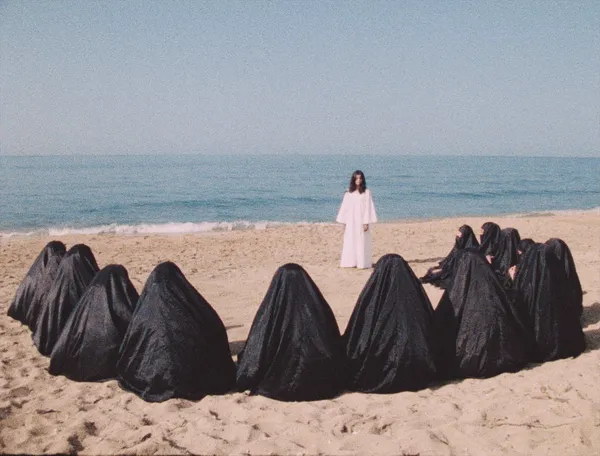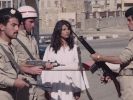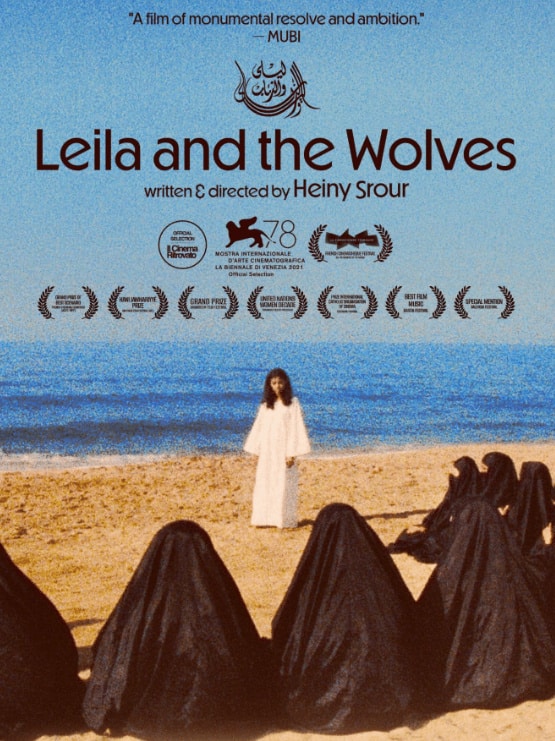Eye For Film >> Movies >> Leila And The Wolves (1984) Film Review
Leila And The Wolves
Reviewed by: Amber Wilkinson

The 2025 US release of the restored version of Lebanese director Heiny Srour’s fiercely feminist Leila And The Wolves could scarcely be more timely as conflict is again raging in the Middle East. Mixing fiction with archive footage, her Arabian Nights-inspired tale takes us time travelling with her protagonist (Nabila Zeitouni), from 1975 London, through a history of women’s resistance in Lebanon and Palestine – to colonialism and the patriarchy – as well as considering her own future self. Stung by a man’s (Rafik Ali Ahmad) suggestion that “women had nothing to do with politics” in the past Leila takes him with her, as he emerges in various different, often less than flattering, roles along the way.
Beyond being ambitious it was also a dangerous film to make, shot during the Lebanese civil war and with Syrian conflict looming. Srour doesn’t hold back as she weaves together her various stories and time periods. In one, we see women pretending to host a wedding ceremony so that they can smuggle bullets out from under the noses of brutal British troops, in another, a female freedom fighter in Lebanon is seen not only dealing with the threat of death but also the insidious sexism of those who are, in theory, on her side.

These twin problems are woven through the film, whether it is colonialist forces trying to impose their rule, or the man of the house taking his daughter out of school or demanding his wife give up her jewellery for guns rather than for medicine for their sick child. “Weapons come before everything,” he tells her. The scripting in general is blunt from Srour, who pulls no punches when it comes to outlining the attitudes women have had to contend with down the decades within the home.
Nowhere is the contrast between the sexes more apparent than on a beach, where a group of women sit in black burkhas, sand running through fingertips as, just metres away, we see men who could themselves have been transported from a future era, laugh and muck about in the waves.
Elsewhere the judicious use of UNRWA and other archive footage reminds us that no matter the limitations of Srour’s budget are sometimes in evidence, her film is reflecting the stark reality, whether it is 1948, 67 or 75. The idea of considering the situation in the round is also enhanced by drifting camerawork that often drinks in a full room or environment.
It’s also striking to think that when Leila is looking forward into the future, she is already, in some senses, looking at our recent past, which only reinforces the sense of the cyclical and ongoing nature of her themes. Footage of refugee camps isn’t so very different from those we see today and the patriarchy still holds sway – some revolutions, like the songs and stories Srour features in her film, also continue to be passed down from mother to daughter as the fight for rights endures.
Reviewed on: 31 Mar 2025
















